Largest city Language spoken Hindi Region East India Governor Population 99.02 million (2012) | ||
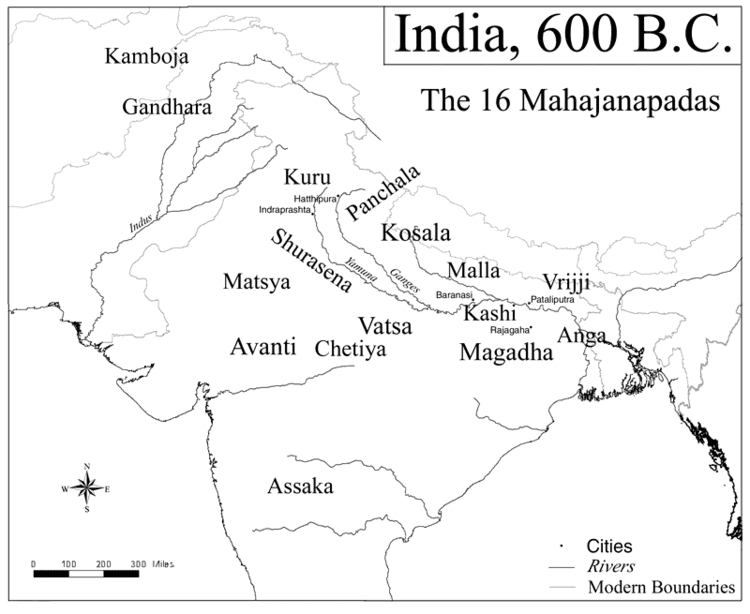 | ||
Colleges and Universities Nalanda Destinations Patna, Muzaffarpur, Gaya, Bhagalpur, Darbhanga Points of interest Mahabodhi Temple, Patna Museum, Golghar, Takht Sri Patna Sahib, Bodhi Tree | ||
Founded 1912 as Bihar and Orissa Province1936 as Bihar Literacy 63.4% (29th)73.4% (male)53.3% (female) | ||
Map of Bihar
Bihar (; [bɪˈɦaːr]) is an Indian state considered to be a part of Eastern as well as Northern India. It is the 13th-largest state of India, with an area of 94,163 km2 (36,357 sq mi). The third-largest state of India by population, it is contiguous with Uttar Pradesh to its west, Nepal to the north, the northern part of West Bengal to the east, with Jharkhand to the south. The Bihar plain is split by the river Ganges which flows from west to east. Bihar is an amalgamation of three main distinct regions, these are Magadh, Mithila and Bhojpur.
Contents
- Map of Bihar
- Ancient nalanda famous tourist place bihar india
- Etymology
- Ancient
- Medieval
- Colonial Era
- Pre and post Independence
- Geography and climate
- Flora and fauna
- Demographics
- Government and administration
- Politics
- Economy
- Agriculture
- Industry
- Income distribution
- Language and literature
- Paintings
- Performing arts
- Cinema
- Religion
- Media
- Airways
- Inland Waterways
- Tourism
- Education
- Indian street food at sonepur mela bihar
- References

On November 15, 2000, southern Bihar was ceded to form the new state of Jharkhand. Only 11.3% of the population of Bihar lives in urban areas, which is the lowest in India after Himachal Pradesh. Additionally, almost 58% of Biharis are below the age of 25, giving Bihar the highest proportion of young people of any Indian state. The official languages of the state are Hindi and Urdu. Other languages commonly used within the state include Bhojpuri, Maithili, Magahi, Bajjika, and Angika (Maithili is the only one of these to be officially accepted by the government).
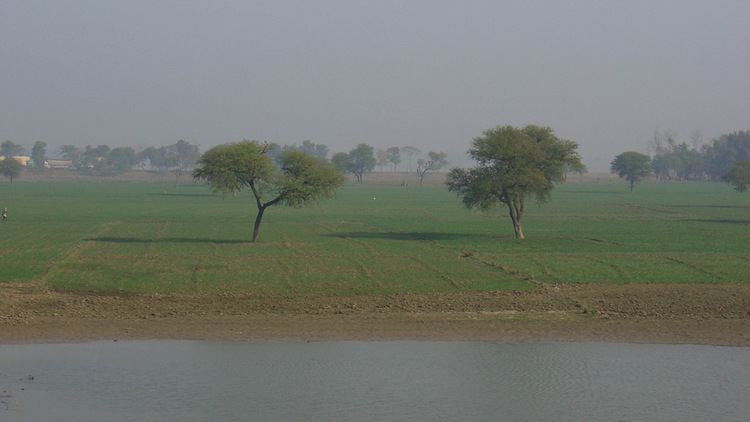
In ancient and classical India, the area that is now Bihar was considered a centre of power, learning, and culture. From Magadha arose India's first empire, the Maurya empire, as well as one of the world's most widely adhered-to religions, Buddhism. Magadha empires, notably under the Maurya and Gupta dynasties, unified large parts of South Asia under a central rule. Another region of Bihar is Mithila which was an early centre of Brahmanical learning and the centre of the Videha kingdom. There is an ongoing movement in the Maithili speaking region of Bihar for a separate Indian state of Mithila. What will be the capital of the state has yet to be decided however Darbhanga is the most likely candidate. Other potential capitals include Muzaffarpur, Purnia, Madhubani and Begusarai.
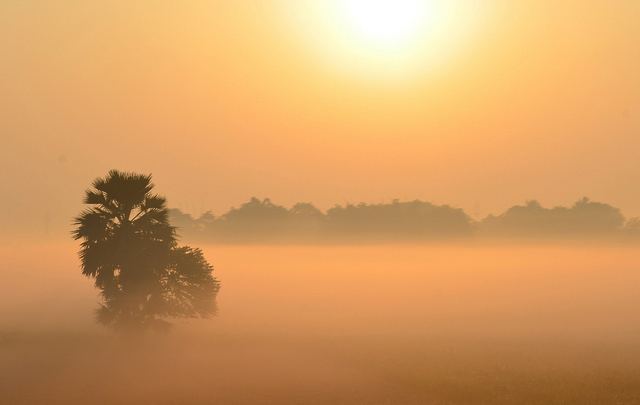
Since the late 1970s, Bihar has lagged far behind other Indian states in terms of social and economic development. Many economists and social scientists claim that this is a direct result of the policies of the central government, such as the Freight equalisation policy, its apathy towards Bihar, lack of Bihari sub-nationalism, and the Permanent Settlement of 1793 by the British East India Company. The state government has, however, made significant strides in developing the state. Improved governance has led to an economic revival in the state through increased investment in infrastructure, better health care facilities, greater emphasis on education, and a reduction in crime and corruption.
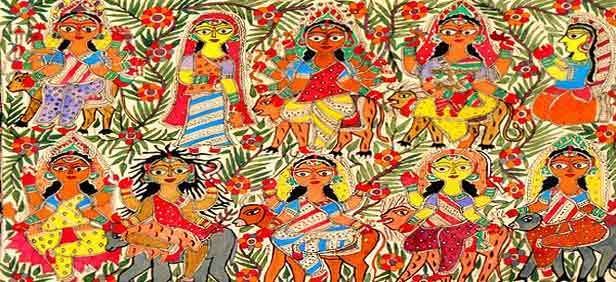
Ancient nalanda famous tourist place bihar india
Etymology
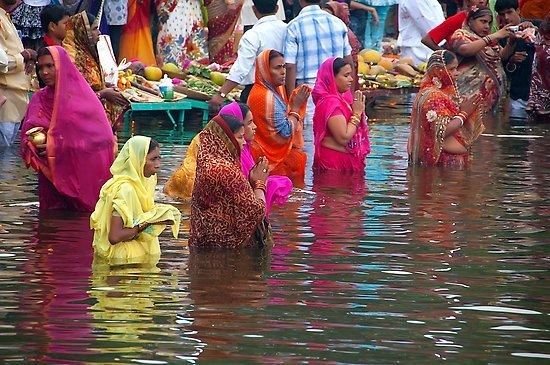
The name Bihar is derived from the Sanskrit and Pali word, Vihara (Devanagari: विहार), meaning "abode". The region roughly encompassing the present state was dotted with Buddhist vihara, the abodes of Buddhist monks in the ancient and medieval periods. Medieval writer Minhaj al-Siraj Juzjani records in the Tabakat-i-Nasiri that in 1198, Bakhtiyar Khalji committed a massacre in a town now known as Bihar Sharif, about 70 km away from Bodh Gaya.
Ancient

Chirand, on the northern bank of the Ganga River, in Saran district, has an archaeological record from the Neolithic age (about 2500–1345 BC). Regions of Bihar—such as Magadha, Mithila and Anga—are mentioned in religious texts and epics of ancient India.
Mithila first gained prominence after being settled by Indo-Aryan peoples who established the Videha Kingdom. During the late Vedic period (c. 1100-500 BCE), Videha became one of the major political and cultural centers of South Asia, along with Kuru and Pañcāla. The Kings of the Videha Kingdom where called Janakas. Sita, a daughter of one of the Janaks of Mithila is mentioned as the consort of Lord Rama, in the Hindu epic, Ramayana, written by Valmiki. The Videha Kingdom later became incorporated into the Vajji confederacy which had its capital in the city of Vaishali, which is also in Mithila. Vajji had a republican form of government where the king was elected from the number of rajas. Based on the information found in texts pertaining to Jainism and Buddhism, Vajji was established as a republic by the 6th century BCE, before the birth of Gautama Buddha in 563 BCE, making it the world's first republic.
The region of modern-day southwestern Bihar called Magadha remained the centre of power, learning, and culture in India for 1000 years. The Haryanka dynasty, founded in 684 BC, ruled Magadha from the city of Rajgriha (modern Rajgir). The two well-known kings from this dynasty were Bimbisara and his son Ajatashatru, who imprisoned his father to ascend the throne. Ajatashatru founded the city of Pataliputra which later became the capital of Magadha. He declared war and conquered the Vajji. The Haryanka dynasty was followed by the Shishunaga dynasty. Later the Nanda Dynasty ruled a vast tract stretching from Bengal to Punjab.
The Nanda dynasty was replaced by the Maurya Empire, India's first empire. The Maurya Empire and the religion of Buddhism arose in the region that now makes up modern Bihar. The Mauryan Empire, which originated from Magadha in 325 BC, was founded by Chandragupta Maurya, who was born in Magadha. It had its capital at Pataliputra (modern Patna). The Mauryan emperor, Ashoka, who was born in Pataliputra (Patna) is believed to be one of the greatest rulers in the history of the world.
The Gupta Empire, which originated in Magadha in 240 AD, is referred as the Golden Age of India in science, mathematics, astronomy, commerce, religion, and Indian philosophy. Bihar and Bengal was invaded by Rajendra Chola I of the Chola dynasty in the 11th century.
Medieval
Buddhism in Magadha went into decline due to the invasion of Muhammad Bin Bakhtiar Khilji, during which many of the viharas and the famed universities of Nalanda and Vikramashila were destroyed. It was claimed that thousands of Buddhist monks were massacred during the 12th century. D. N. Jha suggests, instead, that these incidents were the result of Buddhist-Brahmin skirmishes in a fight for supremacy. In 1540, the great Pathan chieftain, Sher Shah Suri, from Sasaram, took northern India from the Mughals, defeating the Mughal army of Emperor Humayun. Sher Shah declared Delhi his capital.
From the 11th century to the 20th century, Mithila was ruled by various indigenous dynasties. The first of these where the Karnatas, followed by the Oinwar dynasty, Raghuvanshi and finally Raj Darbhanga. It was during this period that the capital of Mithila was shifted to Darbhanga.
The tenth and the last Guru of Sikhism, Guru Gobind Singh was born in Patna.
Colonial Era
After the Battle of Buxar (1764), the British East India Company obtained the diwani rights (rights to administer, and collect revenue or tax) for Bihar, Bengal and Odisha. The rich resources of fertile land, water and skilled labour had attracted the foreign imperialists, particularly the Dutch and British, in the 18th century. A number of agriculture-based industries had been started in Bihar by foreign entrepreneurs. Bihar remained a part of the Bengal Presidency of British India until 1912, when the province of Bihar and Orissa was carved out as a separate province. Since 2010, Bihar has celebrated its birthday as Bihar Diwas on 22 March.
Pre- and post-Independence
Farmers in Champaran had revolted against indigo cultivation in 1914 (at Pipra) and 1916 (Turkaulia). In April 1917, Mahatma Gandhi visited Champaran, where Raj Kumar Shukla had drawn his attention to the exploitation of the peasants by European indigo planters. The Champaran Satyagraha that followed received support from many Bihari nationalists, such as Rajendra Prasad and Anugrah Narayan Sinha.
In the northern and central regions of Bihar, the Kisan Sabha (peasant movement) was an important consequence of the independence movement. It began in 1929 under the leadership of Swami Sahajanand Saraswati who formed the Bihar Provincial Kisan Sabha (BPKS), to mobilise peasant grievances against the zamindari attacks on their occupancy rights. The movement intensified and spread from Bihar across the rest of India, culminating in the formation of the All India Kisan Sabha (AIKS) at the Lucknow session of the Indian National Congress in April 1936, where Saraswati was elected as its first president.
Bihari migrant workers have faced violence and prejudice in many parts of India, such as Maharashtra, Punjab and Assam after independence.
Geography and climate
Bihar has a diverse climate. Its temperature is subtropical in general, with hot summers and cool winters. Bihar is a vast stretch of fertile plain. It is drained by the Ganges River, including its northern tributaries Gandak and Koshi, originating in the Nepal Himalayas and the Bagmati originating in the Kathmandu Valley that regularly flood parts of the Bihar plains. The total area covered by the state of Bihar is 94,163 km2 (36,357 sq mi). the state is located between 24°-20'-10" N ~ 27°-31'-15" N latitude and between 83°-19'-50" E ~ 88°-17'-40" E longitude. Its average elevation above sea level is 173 feet (53 m).
The Ganges divides Bihar into two unequal halves and flows through the middle from west to east. Other Ganges tributaries are the Son, Budhi Gandak, Chandan, Orhani and Phalgu. Though the Himalayas begin at the foothills, a short distance inside Nepal and to the north of Bihar, the mountains influence Bihar's landforms, climate, hydrology and culture. Central parts of Bihar have some small hills, for example the Rajgir hills. To the south is the Chota Nagpur plateau, which was part of Bihar until 2000 but now is part of a separate state called Jharkhand.
Flora and fauna
Bihar has notified forest area of 6,764.14 km2 (2,612 sq mi), which is 7.2% of its geographical area. The sub Himalayan foothill of Someshwar and the Dun ranges in the Champaran district are another belt of moist deciduous forests. These also consist of scrub, grass and reeds. Here the rainfall is above 1,600 millimetres (63 in) and thus promotes luxuriant Sal forests in the area. The most important trees are Shorea Robusta, Sal Cedrela Toona, Khair, and Semal. Deciduous forests also occur in the Saharsa and Purnia districts. Shorea Robusta (sal), Diospyros melanoxylon (kendu), Boswellia serrata (salai), Terminalia tomentose (Asan), Terminalia bellerica (Bahera), Terminalia Arjuna (Arjun), Pterocarpus Marsupium (Paisar), Madhuca indica (Mahua) are the common flora across the forest of Bihar.
Valmiki National Park, West Champaran district, covering about 800 km2 (309 sq mi) of forest, is the 18th Tiger Reserve of India and is ranked fourth in terms of density of tiger population. It has a diverse landscape, sheltering rich wildlife habitats and floral and faunal composition, along with the prime protected carnivores.
Demographics
After the 2011 Census, Bihar was the third most populous state of India with total population of 104,099,452 (54,278,157 male and 49,821,295 female). Nearly 89% of Bihar's population lived in rural areas. The density was 1,106. The sex ratio was 918 females per 1000 males. Almost 58% of Bihar's population was below 25 years age, which is the highest in India. Most of Bihar's population belongs to Indo-Aryan-speaking ethnic groups along with few Dravidian-speaking and Austroasiatic-speaking people mostly in Chhotanagpur Plateau (now part of Jharkhand). It also attracted Punjabi Hindu refugees during the Partition of British India in 1947. Bihar has a total literacy rate of 63.82% (75.7% for males and 55.1% for females), recording a growth of 20% in female literacy over the period of a decade.
At 11.3%, Bihar has the second lowest urbanisation rate in India. As of the 2011 census, population density surpassed 1,000 per square kilometre, making Bihar India's most densely-populated state, but still lower than West Java or Banten of Indonesia.
According to the 2011 census, 82.7% of Bihar's population practised Hinduism, while 16.9% followed Islam.
Government and administration
The constitutional head of the Government of Bihar is the Governor, who is appointed by the President of India. The real executive power rests with the Chief Minister and the cabinet. The political party or the coalition of political parties having a majority in the Legislative Assembly forms the Government.
The head of the bureaucracy of the State is the Chief Secretary. Under this position, is a hierarchy of officials drawn from the Indian Administrative Service, Indian Police Service, and different wings of the State Civil Services. The judiciary is headed by the Chief Justice. Bihar has a High Court which has been functioning since 1916. All the branches of the government are located in the state capital, Patna.
The state is divided into nine divisions and 38 districts, for administrative purposes. Bihar has 12 Municipal Corporations, 49 Nagar Parishads, and 80 Nagar Panchayats.
Politics
See also: Political parties in Bihar, Elections in Bihar and List of politicians from Bihar; Bihar Legislative Assembly election, 2015By 2004, 14 years after Lalu Prasad Yadav's victory, The Economist magazine said that "Bihar [had] become a byword for the worst of India, of widespread and inescapable poverty, of corrupt politicians indistinguishable from mafia-dons they patronise, caste-ridden social order that has retained the worst feudal cruelties". In 2005, the World Bank believed that issues faced by the state were "enormous" because of "persistent poverty, complex social stratification, unsatisfactory infrastructure and weak governance". Currently, there are two main political formations: the National Democratic Alliance (NDA) which comprises Bharatiya Janata Party, Lok Janashakti Party, Rashtriya Lok Samta Party, Hindustani Awam Morchaand JD(U) (Joined recently after breaking the Grand Alliance with RJD and INC), Second is alliance between RJD and Indian National Congress. There are many other political formations. The Communist Party of India had a strong presence in Bihar at one time, but is weakened now. The CPM and Forward Bloc have a minor presence, along with the other extreme Left.
In contrast to prior governments, which emphasised divisions of caste and religion, Nitish Kumar's manifesto was based on economic development, curbs on crime and corruption and greater social equality for all sections of society. Since 2010, the government has confiscated the properties of corrupt officials and redeployed them as schools buildings. Simultaneously they introduced Bihar Special Court Act to curb crime. It has also legislated for a two-hour break on Fridays, including lunch, to enable Muslim employees to pray and thus cut down on post-lunch absenteeism by them. The government has prohibited the sale and consumption of alcohol in the state since March 2016; this ban has been linked to a drop in tourism to Bihar.
Economy
Gross state domestic product of Bihar for the year 2013/2014 has been around 3683.37 billion INR. By sectors, its composition is:
Agriculture = 22%Industry = 5%Services = 73%.Bihar is the fastest growing state in terms of gross state domestic product (GSDP), clocking a growth rate of 17.06% in FY 2014–15. The economy of Bihar is projected to grow at a compound annual growth rate (CAGR) of 13.4% during 2012–2017 i.e. the 12th Five-Year Plan. Bihar has witnessed strong growth in per capita net state domestic product (NSDP). At current prices, per capita NSDP of the state grew at a CAGR of 12.91 per cent during 2004-05 to 2014–15. Bihar's per capita income has gone up by 40.6 per cent in the financial year 2014–15.
Agriculture
Bihar is the largest producer of vegetables and the second-largest producer of fruits in India. Bihar has high agricultural production making it one of the strongest sectors of the state. About 80 per cent of the state’s population is employed in agriculture, which is higher as compared to India’s average. The main agricultural products produced in Bihar are litchi, guava, mango, pineapple, brinjal, lady's finger, cauliflower, cabbage, rice, wheat and sugarcane. Though good soil and favourable climatic conditions such as good rainfall favour agriculture, it has to encounter flood threat as well, which may drain off the fertile soil, if not conserved properly. The state (mostly southern parts) faces droughts almost every year affecting production of crops such as paddy.
Industry
Bihar has emerged as brewery hub with major domestic and foreign firms setting up production units in the state. Three major firms – United Breweries Group, Danish Brewery Company Carlsberg Group and Cobra Beer – are to set up new units in Patna and Muzaffarpur in 2012.
Hajipur, near Patna, remains a major industrial city in the Bihar, linked to the capital city through the Ganges bridge and good road infrastructure.
The state's debt was estimated at 77% of GDP by 2007. The Finance Ministry has given top priority to create investment opportunities for big industrial houses like Reliance Industries. Further developments have taken place in the growth of small industries, improvements in IT infrastructure, the new software park in Patna, and the completion of the expressway from the Purvanchal border through Bihar to Jharkhand. In August 2008, a Patna registered company called the Security and Intelligence Services (SIS) India Limited took over the Australian guard and mobile patrol services business of American conglomerate, United Technologies Corporation (UTC). SIS is registered and taxed in Bihar. The capital city, Patna, is one of the better-off cities in India when measured by per capita income.^ The State Government is setting up an Information Technology (IT) City at Rajgir in Nalanda district. Additionally, India's first Media Hub is also proposed to be set up in Bihar.
Income distribution
In terms of income, the districts of Patna, Munger, and Begusarai were the three best-off out of a total of 38 districts in the state, recording the highest per capita gross district domestic product of ₹31,441, ₹10,087 and ₹9,312, respectively, in 2004–05.
Language and literature
Hindi and Urdu are the official languages of the State. Other languages of the state are Bhojpuri (38.5 million speakers), Maithili (25 million), Magahi (20 million), Bajjika (8.7 million), and Angika (0.7 million), of which only Maithili is recognised by the government of India. Bhojpuri and Magahi are sociolinguistically apart of the Hindi Belt languages fold, thus they were not granted official status in the state.
Urdu is secondary to Hindi in official use. It was only recently that Maithili was also included as one of the state's official languages, although such use of it is negligible. Presently, the Bihari languages, except Maithili, are considered one of the five subgroups of Hindi by the government of India. Surajpuri is spoken in northeastern districts such as Kishanganj.
Paintings
There are several traditional styles of painting practiced in Bihar. One is Mithila painting, a style of Indian painting used in the Mithila region of Bihar.Traditionally, painting was one of the skills that was passed down from generation to generation in the families of the Mithila region, mainly by women. Painting was usually done on walls during festivals, religious events, and other milestones of the life cycle, like birth, Upanayanam (the sacred thread ceremony), and marriage.
Legend states that this style of painting originated at the time of the Ramayana, when King Janak commissioned artists to do paintings at the time his daughter Sita's marriage to Lord Ram. Mithila painting was traditionally done on huts' freshly plastered mud walls, but today it is also done on cloth, handmade paper, and canvas. Famous Mithila painters have included Smt Bharti Dayal, Mahasundari Devi, the late Ganga Devi, and Sita Devi.
Mithila painting is also called Madhubani art. It mostly depicts human beings and their association with nature. Common scenes illustrate deities like Krishna, Ram, Shiva, Durga, Lakshmi, and Saraswati from ancient epics. Natural objects like the sun, moon, and religious plants like tulsi are also widely painted, along with scenes from the royal court and social events like weddings. Generally no space is left empty.
Manjusha Kala or Angika Art is another Bihari art form, practiced in the Anga region.
Historically, the Patna School of Painting (Patna Salaam), sometimes called Company Painting, flourished in Bihar during the early 18th to mid-20th centuries. The Patna School of Painting was an offshoot of the well-known Mughal Miniature School of Painting. Those who practiced this art form were descendants of Hindu artisans of Mughal painting. Facing persecution from the Mughal Emperor, Aurangzeb, these artisans found refuge, via Murshidabad, in Patna during the late 18th century. Their art shared the characteristics of the Mughal painters, but whereas the Mughal style depicted only royalty and court scenes, the Patna artists also started painting bazaar scenes. They used watercolours on paper and on mica. The style's subject matter evolved to include scenes of Indian daily life, local rulers, festivals, and ceremonies. This school of painting formed the basis for the formation of the Patna Art School under the leadership of Shri Radha Mohan. The School is an important center of fine arts in Bihar.
Performing arts
Bihar has produced musicians like Bharat Ratna Ustad Bismillah Khan and dhrupad singers like the Malliks (Darbhanga Gharana) and the Mishras (Bettiah Gharana) along with poets like Vidyapati Thakur who contributed to Maithili Music. The classical music in Bihar is a form of the Hindustani classical music. Gaya is another centre of excellence in classical music, particularly of the Tappa and Thumri varieties. Pandit Govardhan Mishra – son of the Ram Prasad Mishra, himself an accomplished singer – is perhaps the finest living exponent of Tappa singing in India today, according to Padma Shri Gajendra Narayan Singh, founding secretary of the Sangeet Natak Academi of Bihar. Gajendra Narayan Singh also writes, in his memoir, that Champanagar, Banaili, was another major centre of classical music. Rajkumar Shyamanand Sinha of Champanagar, Banaili princely state, was a great patron of music and was himself one of the finest exponents of classical vocal music in Bihar in his time. Singh, in another book on Indian classical music, has written that "Kumar Shyamanand Singh of Banaili estate had such expertise in singing that many great singers including Kesarbai Kerkar acknowledged his ability. After listening to bandishes from Kumar Sahib, Pandit Jasraj was moved to tears and lamented that, alas!, he did not have such ability himself." [free translation of Hindi text].
During the 19th century, when the condition of Bihar worsened under the British misrule, many Biharis had to emigrate as indentured labourers to the West Indies, Fiji, and Mauritius. During this time many sad plays and songs called birha became popular, in the Bhojpur region, thus Bhojpuri Birha. Dramas incorporating this theme continue to be popular in the theatres of Patna.
Cinema
Bihar has a robust Bhojpuri-language film industry. There is also a smaller production of Magadhi-, Maithili-, as well as Angika-language films. The first film with Bhojpuri dialogue was Ganga Jamuna, released in 1961. Bhaiyaa, the first Magadhi film, was released in 1961. The first Maithili movie was Kanyadan released in 1965.
The history of films entirely in Bhojpuri begins in 1962 with the well-received film Ganga Maiyya Tohe Piyari Chadhaibo ("Mother Ganges, I will offer you a yellow sari"), which was directed by Kundan Kumar. 1963's Lagi nahin chute ram was the all-time hit Bhojpuri film, and had higher attendance than Mughal-e-Azam in the eastern and northern regions of India. Bollywood's Nadiya Ke Paar is another of the most famous Bhojpuri-language movies. However, in the following years, films were produced only in fits and starts. Films such as Bidesiya ("Foreigner", 1963, directed by S. N. Tripathi) and Ganga ("Ganges", 1965, directed by Kundan Kumar) were profitable and popular, but in general Bhojpuri films were not commonly produced in the 1960s and 1970s.
In the 1980s, enough Bhojpuri films were produced to tentatively support a dedicated industry. Films such as Mai ("Mom", 1989, directed by Rajkumar Sharma) and Hamar Bhauji ("My Brother's Wife", 1983, directed by Kalpataru) continued to have at least sporadic success at the box office. However, this trend faded out by the end of the decade, and by 1990, the nascent industry seemed to be completely finished.
The Bhojpuri film industry took off again in 2001 with the super hit Saiyyan Hamar ("My Sweetheart", directed by Mohan Prasad), which vaulted the hero of that film, Ravi Kishan, to superstardom. This success was quickly followed by several other remarkably successful films, including Panditji Batai Na Biyah Kab Hoi ("Priest, tell me when I will marry", 2005, directed by Mohan Prasad) and Sasura Bada Paisa Wala ("My father-in-law, the rich guy", 2005). In a measure of the Bhojpuri film industry's rise, both of these did much better business in the states of Uttar Pradesh and Bihar than mainstream Bollywood hits at the time, and both films, made on extremely tight budgets, earned back more than ten times their production costs. Sasura Bada Paisa Wala also introduced Manoj Tiwari, formerly a well-loved folk singer, to the wider audiences of Bhojpuri cinema. The success of Ravi Kishan & Manoj Tiwari's films has led to a dramatic increase in Bhojpuri cinema's visibility, and the industry now supports an awards show and a trade magazine, Bhojpuri City, which chronicles the production and release of what are now over one hundred films per year.
Religion
Hindu Goddess Sita, the consort of Lord Rama is believed to be born in Sitamarhi district in the Mithila region of modern-day Bihar. Gautama Buddha attained Enlightenment at Bodh Gaya, a town located in the modern day district of Gaya in Bihar. Vasupujya, the 12th Jain Tirthankara was born in Champapuri, Bhagalpur. Vardhamana Mahavira, the 24th and the last Tirthankara of Jainism, was born in Vaishali around the 6th century BC.
Media
Biharbandhu was the first Hindi newspaper published in Bihar. It was started in 1872 by Madan Mohan Bhatta, a Marathi Brahman who settled in Bihar Sharif. Hindi journalism in Bihar, and specially Patna, could make little headway initially. Many Hindi journals were born and, after a lapse of time, vanished. Many journals were shelved even in the planning stages. But once Hindi had the support of being an official language, it started making inroads, even into the remote areas of Bihar. Hindi journalism acquired wisdom and maturity, and its longevity was assured. Hindi was introduced in the law courts in Bihar in 1880.
Urdu journalism and poetry has a glorious past in Bihar. Many poets belong to Bihar, such as Shaad Azimabadi, Kaif Azimabadi, and Kalim Ajiz. Shanurahman, a world-famous radio announcer, is from Bihar. Many Urdu dailies— such as Qomi Tanzim and Sahara—are published in Bihar. There is a monthly Urdu magazine called Voice of Bihar – which is the first of its kind and is becoming popular among the Urdu speaking people.
The beginning of the 20th century was marked by a number of notable new publications. A monthly magazine named Bharat Ratna was started in Patna, in 1901. It was followed by Ksahtriya Hitaishi, Aryavarta from Dinapure, Udyoga, and Chaitanya Chandrika. Udyog was edited by Vijyaanand Tripathy, a famous poet of the time, and Chaitanya Chandrika by Krishna Chaitanya Goswami, a literary figure of that time. The literary activity was not confined to Patna alone but to other districts of Bihar.
Hindustan, Dainik Jagran, Aaj, Magnificent Bihar, Nayee Baat, and Prabhat Khabar are some of the Hindi newspapers of Bihar. National English dailies like The Times of India, Hindustan Times, Navbharat Times, The Telegraph, and The Economic Times have readers in the urban regions.
Airways
Bihar has three operational airports: Lok Nayak Jayaprakash Airport, Patna; Gaya Airport; and Purnea Airport. The Patna airport is categorised as a restricted international airport, with customs facilities to receive international chartered flights. An airport at Muzaffarpur is under construction.
Inland Waterways
The Ganges – navigable throughout the year – was the principal river highway across the vast north Indo-Gangetic Plain. Vessels capable of accommodating five hundred merchants were known to ply this river in the ancient period; it served as a conduit for overseas trade, as goods were carried from Pataliputra (later Patna) and Champa (later Bhagalpur) out to the seas and to ports in Sri Lanka and Southeast Asia. The role of the Ganges as a channel for trade was enhanced by its natural links – it embraces all the major rivers and streams in both north and south Bihar.
Tourism
The culture and heritage of Bihar can be observed from the large number of ancient monuments spread throughout the state. Bihar is visited by many tourists from around the world, with about 24,000,000 (24 million) tourists visiting the state each year.
In earlier days, tourism in the region was purely based on educational tourism, as Bihar was home of some prominent ancient universities like Nalanda & Vikramashila.
Education
Historically, Bihar has been a major centre of learning, home to the ancient universities of Nalanda (established in 450 CE), Odantapurā (established in 550CE) and Vikramashila (established in 783 CE). This tradition of learning may have been stultified during the period of Turkic invasions, c. 1000 CE, at which point it is believed major education centres, maintained by reclusive communities of Buddhist monks removed from the local populace, were suppressed by the Turkic raids originating from central Asia .
Bihar saw a revival of its education system during the later part of the British rule, when Patna University, the seventh oldest university of the Indian subcontinent, was established in 1917. Some other centres of high learning established under British rule are Patna College (established 1839), Bihar School of Engineering (1900; now known as National Institute of Technology, Patna), Prince of Wales Medical College (1925; now Patna Medical College and Hospital), and Science College, Patna (1928), among others.
Bihar is striving to increase female literacy, now at 53.3%, as the government establishes educational institutions. At the time of independence, women's literacy in Bihar was 4.22%. Bihar has a National Institute of Technology (NIT) and an Indian Institute of Technology (IIT) in Patna. A recent survey by Pratham rated the receptivity of Bihari children to their teaching as being better than those in other states. The National Employability Report of Engineering Graduates, 2014 puts graduates from Bihar in the top 25 percent of the country, and rating Bihar as one of the three top states at producing engineering graduates in terms of quality and employability.
As of December 2013, there are 7 government engineering colleges in the public sector, and 12 engineering colleges in the private sector, in Bihar, besides government-aided BIT Patna and Women's Institute of Technology, Darbhanga. The overall annual intake of these technical institutes in Bihar is only 6,200. In Bihar, government colleges are located at Muzaffarpur, Bhagalpur, Gaya, Darbhanga, Motihari, Nalanda, and Saran (Chhapra). All institutes are recognised by All India Council for Technical Education (AICTE), affiliated with Aryabhatta Knowledge University (AKU). As it is, the foundation stone of the eighth engineering college of the state government, Ramdhari Singh Dinkar Engineering College, was laid on 22 December 2013 at Begusarai, while the process of creating the infrastructure for two new engineering colleges – one each at Madhepura and Sitamarhi – has started.
NIT Patna is the second oldest engineering college of India. Its origin can be traced to 1886, with the establishment of a survey training school, subsequently renamed Bihar College of Engineering in 1932. In 2004, the government of India upgraded the college to National Institute of Technology (NIT) status. In 2007, NIT Patna was granted Institute of National Importance status, in accordance with the National Institutes of Technology Act, 2007.
Bihar established several new educational institutes between 2006 and 2008. BIT Mesra started its Patna extension centre in September 2006. On 8 August 2008, Indian Institutes of Technology Patna was inaugurated with students from all over India In 2008, NSIT opened its new college in Bihta, which is now emerging as an education hub. BCE, Bhagalpur, MIT, Muzaffarpur, and the National Institute of Pharmaceutical Education and Research, Hajipur (NIPER) are in Bihar. On 4 August 2008, National Institute of Fashion Technology Patna was established as the ninth such institute in India. Chanakya National Law University and Chandragupt Institute of Management were established in the later half of 2008. Steps are being taken to revive the ancient Nalanda Mahavihara as Nalanda International University. Countries such as Japan, Korea, and China have also taken initiatives. The Aryabhatt Knowledge University in Patna is a centre with which all the engineering and medical colleges in Bihar are affiliated. The A.N. Sinha Institute of Social Studies is a premier research institute in the state.
Bihar e-Governance Services & Technologies (BeST) and the Government of Bihar have initiated a unique program to establish a centre of excellence called Bihar Knowledge Center, a finishing school to equip students with the latest skills and customised short-term training programs at an affordable cost. The centre aims to attract the youth of the state to improve their technical, professional, and soft skills, to meet the current requirements of the industrial job market.
Bihar has the Central Institute of Plastic Engineering & Technology (CIPET) and the Institute of Hotel Management (a central government unit) in Hajipur.
The Central University of Bihar (CUB) is one of the sixteen central universities newly established by the Government of India under the Central Universities Act, 2009 (Section 25 of 2009). The university is temporarily located on the premises of the Birla Institute of Technology, Patna. The university is likely to be relocated to Panchanpur, approximately 10 kilometres (6.2 mi) from Gaya, on 300 acres (120 ha) of land to be transferred soon from the military. On 28 February 2014, Lok Sabha Speaker Meira Kumar laid the foundation stone.
Mahatma Gandhi Central University—also established under the Central Universities Act, and Amendment Act of 2014—is situated in Motihari, the district headquarters of East Champaran district.
One of India's premier medical institutes – AIIMS Patna – is in Patna. It is affiliated with AIIMS, New Delhi.
Dr. Rajendra Prasad Central Agricultural University located in PUSA in Samastipur district is one of the major university in India in term of education in Agricultural Science and Research.PUSA is also a place where regional centre of IARI is placed.
Nalanda University was re-established in 2014.
